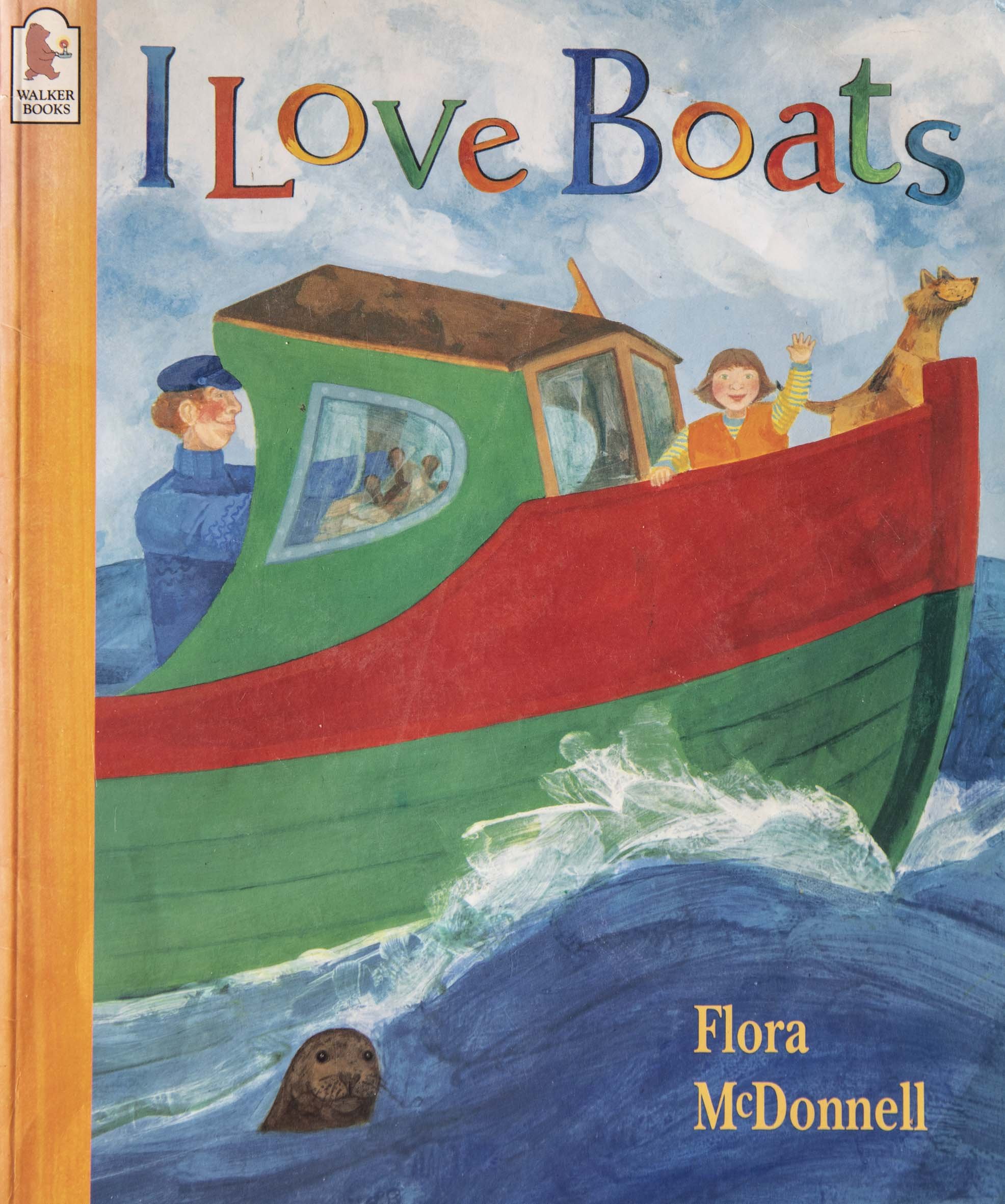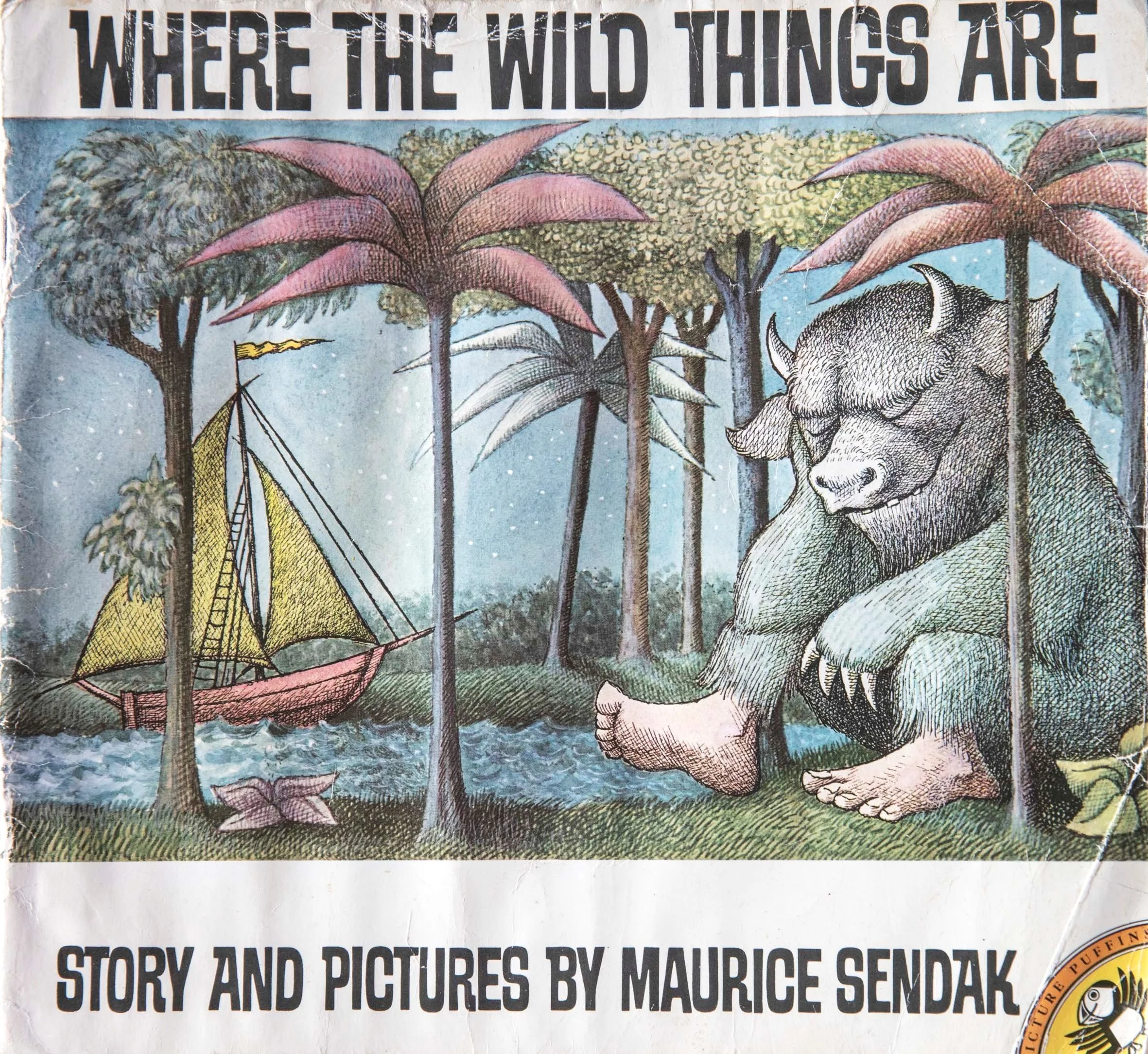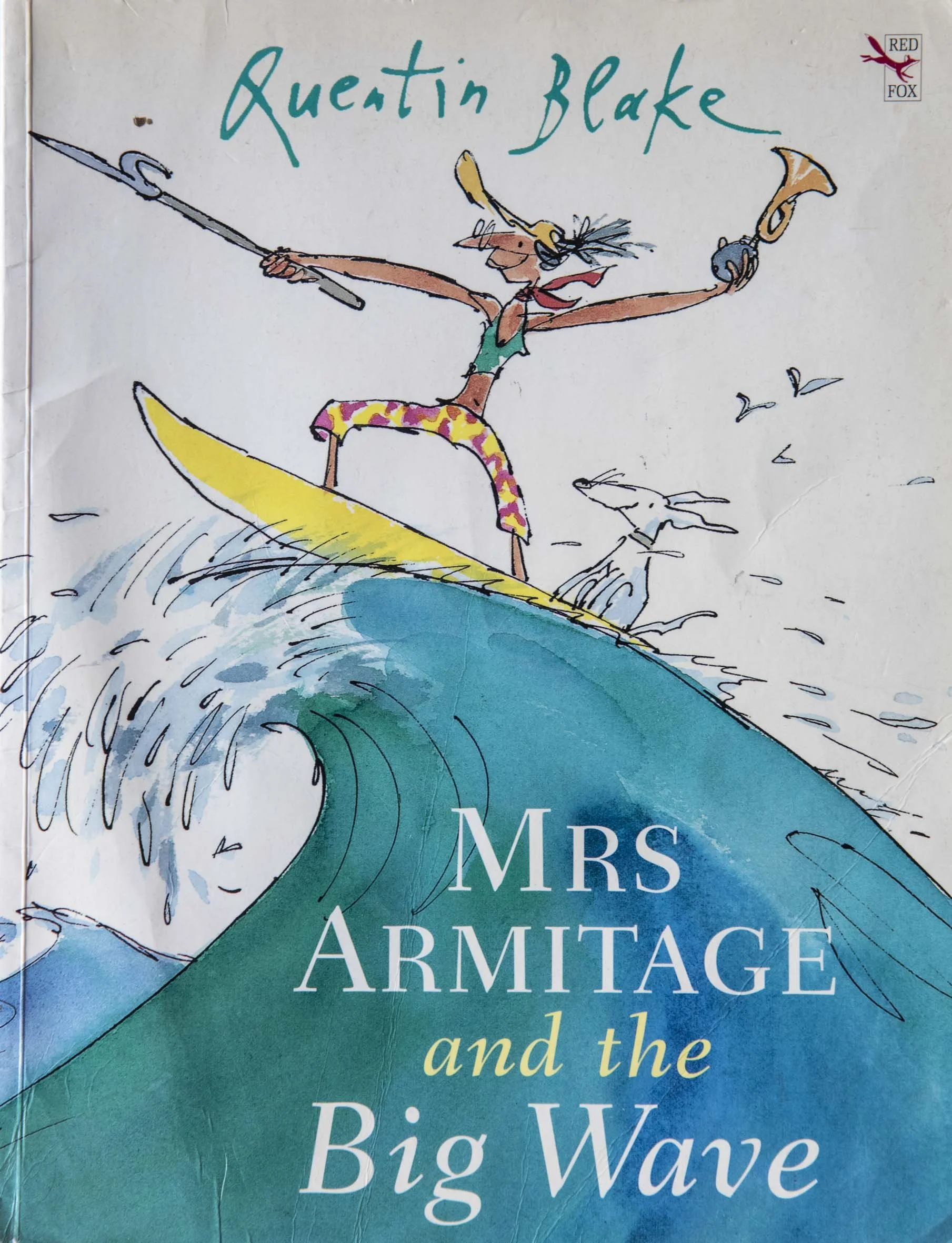Indoctrinate them Early
BY SAL BALHARRIE AND MARK CHEW
We’re in that “no small children” phase. The ones of our own have left home and haven’t yet made the commitment to extend the family tree.
Reading bedtime stories is a distant memory, but a scan across the library shelf at home, where children’s books (only the quality ones) are still stored, makes us realise that boats were a major part of their early language. With Christmas around the corner, may we humbly suggest you make a trip to your nearest second hand book store and track down a copy of one or two of these beauties. Recycling books is a deep and meaningful pleasure, but if you have to go with a new copy, just do it. Even if you don’t have children, grandchildren, nieces and nephews to read them to …chances are you will enjoy it yourself.
As C.S. Lewis said “A children’s story that can only be enjoyed by children is not a good children’s story in the slightest.”
// Editor Mark Chew
THE SAILOR DOG by Margaret Wise Brown
Born at sea in the teeth of a gale, the sailor was a dog. Scuppers was his name.
After that he lived on a farm. But Scuppers born at sea, was a sailor. And when he grew up, he wanted to go to sea.
THE SAILOR WAS A DOG reads like an epic poem of a long journey and as such follows the story telling device of Homer’s The Odyssey although unlike Odysseus, Scuppers does not return to land, no this hero decides to stay at sea.
And here he is where he wants to be -
a sailor sailing the deep green sea.
This is a story of identity, self-respect, conviction and freedom. And you thought you were about to read the story of a curious dog!
Born into one kind of life (the sea) but forced to live another (as a farmer) our hero tries to live an alternate life but realises it won’t make him happy (taxi driver) and that he must follows his passion to become a sailor and therein become the captain on his own adventure. But being poorly prepared (when he jumps blindly into the first opportunity), Scuppers finds himself shipwrecked with all his worldly possessions lost. Forced to discover ‘treasure’ in unusual places he realises that if he uses his brain and has a strategy, he doesn’t need to be rescued - he can find himself (self determination and agency). Scuppers then has a moment as a Colonial sympathiser in a foreign country before allowing himself the space to be free and achieve his true self - sailing the deep green sea.
Here’s a bit more about Margaret:
Margaret Wise Brown wrote hundreds of books and stories during her life. Even though she died over 45 years ago, her books still sell very well. Margaret loved animals. Most of her books have animals as characters in the story. She liked to write books that had a rhythm to them. Sometimes she would put a hard word into the story or poem. She thought this made children think harder when they are reading. She wrote all the time. There are many scraps of paper where she quickly wrote down a story idea or a poem. She said she dreamed stories and then had to write them down in the morning before she forgot them. She tried to write the way children wanted to hear a story, which often isn't the same way an adult would tell a story. She also taught illustrators to draw the way a child saw things. One time she gave two puppies to someone who was going to draw a book with that kind of dog. The illustrator painted many pictures one day and then fell asleep. When he woke up, the papers he painted on were bare. The puppies had licked all the paint off the paper. Margaret died after surgery for a bursting appendix while in France. She had many friends who still miss her. They say she was a creative genius who made a room come to life with her excitement. Margaret saw herself as something else - a writer of songs and nonsense.
Written by Margaret Wise Brown with illustrations by Garth Williams, THE SAILOR DOG WAS first published in 1953 available for purchase via Amazon A Golden Book
I LOVE BOATS by Flora McDonnell
I LOVE BOATS is the ultimate introduction for small people to the concepts of vernacular and what it means to love things that float. FLORA McDONNELL’S illustrations bob and move, float and pace - you can feel the wind on your face and the sound of gulls in the air. Boats are painted twisting, moving, tilting with constant shifts in perspective - placing the reader above, beside, below, in front of the hero of each page - the boat.
Flora McDonnell is an artist and picture book maker and each page invites the reader and the child on the knee in to explore and discuss the greater story unfolding with each turn as oceans and harbours spring to life with industry, animals and chalky colours.
SCHNORKY THE WAVE PUNCHER by Jeff Raglus
At design school in the 90’s everyone wanted to be JEFF RAGLUS. Jeff was the dude, the artist, the muso, the talent who gave the clothing brand Mambo its true edge.
Amongst all his talents, Jeff is a writer and illustrator of kid’s books and SCHNORKY THE WAVE PUNCHER is right up there!
This story centres on the concept of ‘other’; the ‘outsider’; how we react against people who don’t fit the mould; how heroes can be found in unlikely places and most importantly, acceptance. This book was written in a world before adults were being diagnosed with ADHD, pills were handed out to kids along with labels and pronouns were something else. In other words at a time when strange people were - for better or for worse - just a little bit strange.
But sometimes at night we peek through his window and see him working on strange maps and charts by candlelight.
Schnorky was an eco-warrior whose scattering of seeds upset Mr and Mrs Tweet, he disrespected authority and his bartering for food found conservatives having kittens. People petitioned for his deliberate exclusion.
But what everyone forgot was that this man could surf and when a storm came placing a boat in peril, only one person had a plan to save those on deck. He surfed the terrified crew to shore.
SCHNORKY WAS EVERYONE’S HERO
Jeff Raglus is a contemporary artist who divides his practice equally between music and the visual arts. Encompassing all that is pop, Jeff's work constantly blurs the boundaries between fine and graphic art.
Jeff has toured overseas and around Australia many times with various musical ensembles. He has screen printed fabrics, T shirts and posters, made clothes, stage sets, designed CD and record covers and helped make video clips.
He has worked for Mambo, Swatch, Sony, Ansett Airlines and The Arena Theatre Company.
Jeff has written and illustrated several children's books, two of which have been published overseas, he has also worked as an animator.
Jeff is a multi instrumental musician, a singer/songwriter, a sculptor and most commonly a painter. He has had at least one solo exhibition every year since 1989.
WHERE THE WILD THINGS ARE by Maurice Sendak
MAURICE SENDAK wrote WHERE THE WILD THINGS ARE in 1963 and the title has since sold more than 19 million copies world wide. It’s a story of imagination and facing fears; the need for boundaries and that success is a quest for independence, fun and adventure. And what was Max’s preferred mode of transport? Why a boat of course!
As a child, my take away from this fantastic story was very simple - only naughty children have adventures and so I promised myself to always be naughty - and it worked. Equally as a small child when lost in Myer’s Department store I reassured myself that just like Max, I too would be home after my ordeal, safe with a warm meal waiting for me - and that too also worked. What this all meant was that even as a kid you had power to get through terrible things and that no matter what, home is the best place of all.
But it’s the illustrations that truly elevate this story towards the gods. Maurice gives us wild things that we can never forget. Wild things who can eat us up.
They roared their terrible roars and gnashed their terrible teeth and rolled their terrible eyes and showed their terrible claws till Max said “BE STILL!”
And yet even with their yellow eyes, a small boy was able to make friends with the monsters. Is that a good message? The stuff of philosophical debate.
WHERE THE WILD THING ARE by Maurice Sendak remains widely available in bookshops.
MRS ARMITAGE AND THE BIG WAVE by Quentin Blake
After a while a breeze sprang up and blew briskly along the shore. “This is delightful,” said Mrs Armitage; “but what we need here is something to show us Wind Force and Direction.”
MRS ARMITAGE AND THE BIG WAVE aka a children’s guide to age is just a number. Meet MRS A a woman who does stuff while wearing long board shorts accompanied by her needy dog Breakspear. Mrs A is the ultimate problem solver and proves to any child that nanas are verbs - they do stuff.
This book comes to us from Quentin Blake the genius whose working relationship with Roald Dahl found words spring to life with illustrations filled with verve, spirit, joy and magic.
Blake is beyond brilliant. He is anarchic, moral, infinitely subversive, sometimes vicious, socially acute, sparse when he has to be, exuberantly lavish in the details when he feels like it. He can tell wonderful stories without a single word, but his partnership with Roald Dahl was made in heaven. Or somewhere. The diabolic ingenuity of Dahl came into its own only when he wrote for children. In conjunction with Blake, there was a kind of alchemy. I've never met a child who didn't love Quentin Blake. - Melanie McDonagh, Daily Telegraph
And the takeaway? When I grow up I want to be Mrs Armitage.
MRS ARMITAGE AND THE BIG WAVE by Quentin Blake is available via BOOKTOPIA
Who Sank the Boat by Pamela Allen
Premise - When five friends - a cow, a donkey, a sheep, a pig and a little mouse - decide to go boating, the boat sinks.
Is Pamela Allen’s book WHO SANK THE BOAT the greatest who-done-it of all time OR a genius attempt to educate children, on the Archimedes' principle?
DO you know who sank the boat? Was it the pig as fat as butter, who stepped in at the side and caused a great flutter? Was it the little mouse, the last to get in, who was lightest of all? Could it be him?
Displacement is determined by the internal volume of the hull (Volume displacement) which is multiplied by the density of the water in which the boat floats. OR, Displacement (s) of an object equals, velocity (u) times time (t), plus ½ times acceleration (a) times time squared (t2).
What looks like an impenetrable calculation is suddenly made crystal clear:
Displacement (S) = Cow (C) + Donkey (D) + Sheep (S) + Pig (P)
OR S = (C + D + S + P)
Therefore
Sinking = S + Little Mouse (LM)
QED
Here endeth the lesson.
WHO SANK THE BOAT? by Pamela Allen is widely available.
// Books reviewed with TOTAL DELIGHT by Sal Balharrie






























